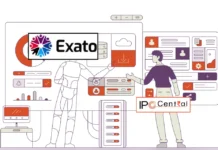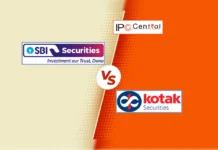Indian Energy Exchange IPO (IEX IPO) opens for subscription on 9 October 2017 with an aim to mobilize INR1,000 crore. Priced in the range of INR1,645 – 1,650 per share, Indian Energy Exchange IPO will be the 29th mainboard IPO this year. Investors can place their bids for minimum 9 shares and in multiples thereafter. The IPO will be closely watched as the company operates in a duopoly and has strong profit margins. However, the recent subdued listing of ICICI Lombard General Insurance and SBI Life Insurance has made investors wary of big names. Through Indian Energy Exchange IPO review, we aim to find out if it is a good addition to your portfolio.
Indian Energy Exchange IPO details | |
| Subscription Dates | 9 – 11 October 2017 |
| Price Band | INR1,645 – 1,650 per share |
| Fresh issue | Nil |
| Offer For Sale | 6,065,009 shares (INR997.69 – 1,000.72 crore) |
| Total IPO size | 6,065,009 shares (INR997.69 – 1,000.72 crore) |
| Minimum bid (lot size) | 9 shares |
| Face Value | INR10 per share |
| Retail Allocation | 35% |
| Listing On | NSE, BSE |
IEX IPO Review: No promoter but all OFS
The IPO will not involve issue of new shares and all the shares will be sold by existing investors. The company has no promoter but counts several private equity investors among its shareholders. This includes DCB Power Ventures, TVS Shriram Growth Fund, Multiples Private Equity, Aditya Birla Private Equity, Lightspeed Venture Partners, Westbridge and Golden Oak Mauritius.
A total of 6,065,009 shares will be offered in the IPO and the Offer For Sale (OFS) will be led by Multiples Private Equity (the PE firm will sell 2,729,576 shares from its two funds), Tata Power (1,250,000 shares), Golden Oak Mauritius (682,394 shares), Aditya Birla Private Equity (510,000 shares from two funds) and Lightspeed (303,286 shares).

Indian Energy Exchange IPO Review: Early mover advantage
Indian Energy Exchange is the largest exchange for the trading of a range of electricity products in India. Three main contracts are traded on the exchange – Electricity contracts in blocks of 15 minutes in the day-ahead-market (DAM), Electricity contracts for fixed terms in the future known as the term-ahead-market (TAM), Renewable Energy Certificates (RECs). The exchange also started the trading of Energy Saving Certificates last month. The DAM constitutes the substantial majority of the energy contracts that are traded on the exchange. The exchange accounted for 99.4% of the total DAM electricity contracts executed in India during FY2017. For the combined DAM, TAM and REC contracts, Indian Energy Exchange’s market share stood at 94.8%.
As of 31 August 2017, the exchange had over 5,900 participants, including 4,300 participants eligible to trade electricity contracts and over 4,000 registered participants eligible to trade RECs. These participants included 50 distribution companies, over 400 electricity generators and over 3,900 open access consumers. In FY2017, participants traded and cleared 40,528 million kWh of power on the exchange, reflecting a growth of 77.5% from 22,827 million kWh of power traded in FY2013.
Indian Energy Exchange IPO Review: Financial performance
The exchange earns through transaction fees and annual subscription fees. The company charges a transaction fee of 2 paise per unit on each side and annual subscription fee of INR500,000. These two revenue streams accounted for 85.5% of the company’s total income in FY2017. The remaining came from interest income, dividend income and profit on sale of current investments (including training income). As seen in the table below, revenues have grown consistently and have nearly doubled in the last five years to INR237.4 crore. Being an exchange, the company’s costs are quite low and are able to serve a highly-scalable business. As a result, expenses are low, leading to high profits. In the latest year, profits stood at INR113.6 crore, up from INR66.3 crore in FY2013.
In a strong show of its scalable business model, the company has maintained profit margins around 50% and its debt-free balance sheet has certainly helped. This is not abnormal as we have seen such strength in margins in the case of CDSL.
Indian Energy Exchange’s financial performance (in INR crore) | ||||||
| FY2013 | FY2014 | FY2015 | FY2016 | FY2017 | Q1 FY2018 | |
| Total revenue | 138.4 | 174.0 | 176.4 | 200.1 | 237.4 | 61.7 |
| Total expenses | 38.6 | 41.1 | 43.9 | 53.5 | 64.2 | 14.8 |
| Profit after tax | 66.3 | 91.9 | 90.0 | 100.3 | 113.6 | 30.6 |
| Net margin (%) | 47.9 | 52.8 | 51.0 | 50.1 | 47.9 | 49.6 |
Indian Energy Exchange IPO Review: Should you subscribe?
Electricity trading is a nascent market and it helps to be an early mover in such markets. Being the first one, Indian Energy Exchange enjoys this advantage as competition has still not caught up. It has only one meaningful competitor in the form of Power Exchange of India. With only 3% of the total electricity generated traded through exchanges, India has huge room for further growth. In developed countries, this figure is in the range of 30 to 50% which implies that the nascent market for energy trading offers tremendous opportunity for players like Indian Energy Exchange.
There is another trend underway which should help exchanges. As traditional electricity sources increasingly compete with renewable, distribution companies are increasingly hesitant in signing long-term contracts with producers, in turn shifting the market to short-term contracts. Adequate supply in the short term market and cost optimization by large industrial consumers are other factors helping the short term market. According to industry forecasts by CRIS (CRISIL Risk and Infrastructure Solutions), volumes in the short‐term market are expected to increase at a CAGR of 20% over the next five years to become 21% of overall market. This is expected to boost the share of exchanges in short term contracts to 43%.
Now that the long term prospects appear bright, the deciding factor in making the investment decision turns out to be valuations. The company had Earnings Per Share (EPS) of INR37.66 in FY 2017 which means that the company is asking for Price/Earnings (P/E) ratio in the range of 43.68 to 43.81. When it comes to exchanges, it might be tempting to compare Indian Energy Exchange with BSE but we don’t think it would be correct. BSE operates into high-volume equity trading, faces tough competition and has ceded its leadership position to NSE. This means there are no listed peers but CDSL comes close with its similarly high margins, bright outlook and debt-free status. CDSL currently trades at P/E multiple of 46. Among other metrics, Indian Energy Exchange has Return on Net Worth (RONW) of 41.3% and Net Asset Value (NAV) of INR94.92 per share. The latter means the Price/Book Value (P/B) ratio stands at 17.38 which is quite high.
Overall, Indian Energy Exchange IPO review tells us that the company is a solid play in energy trading space but one which may be priced to perfection. It may still make money for investors but certainly not a no-brainer like CDSL. Investors with high risk appetite may still go ahead with this and in that case, keeping an eye on grey market movements will help.






































